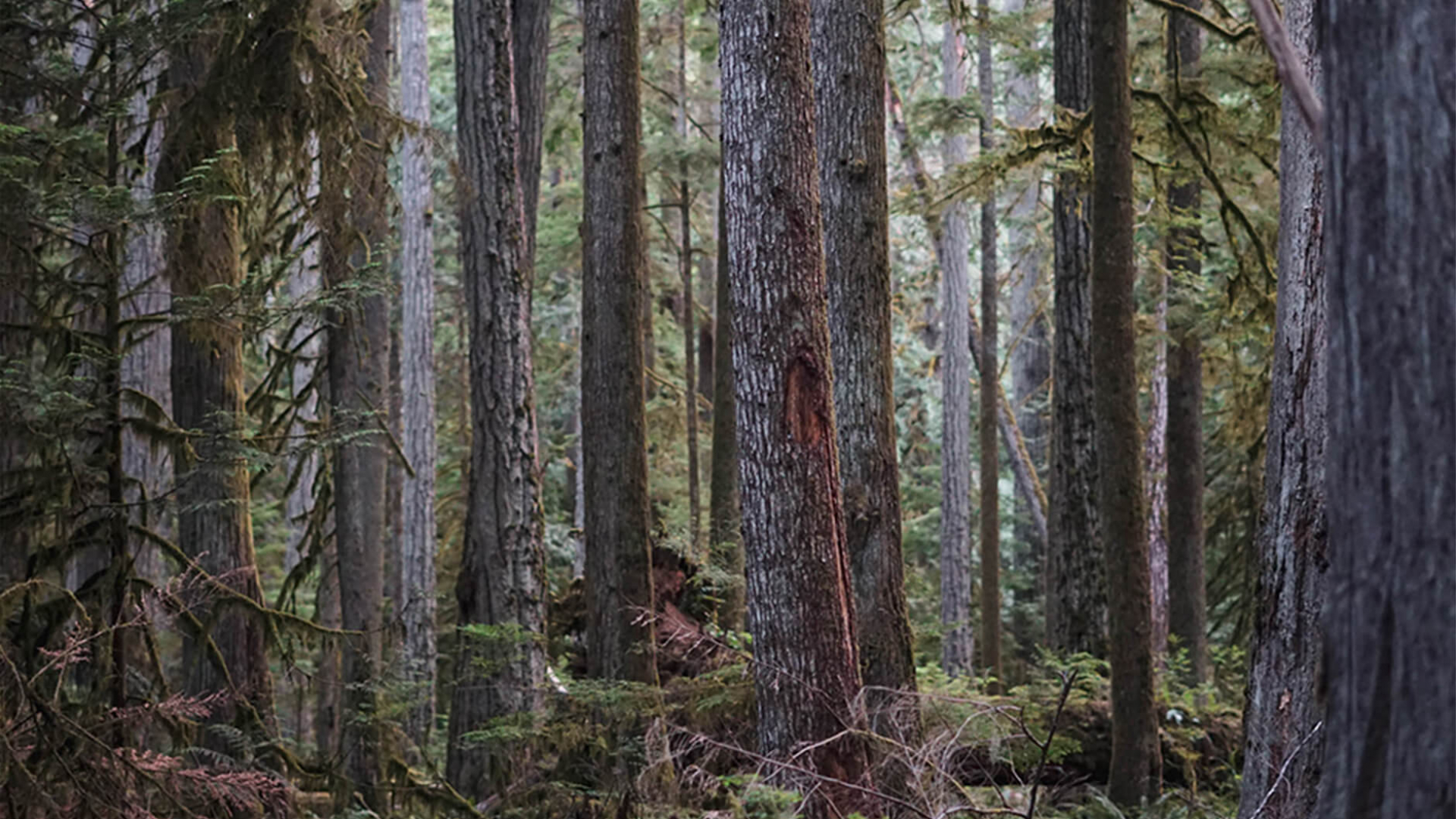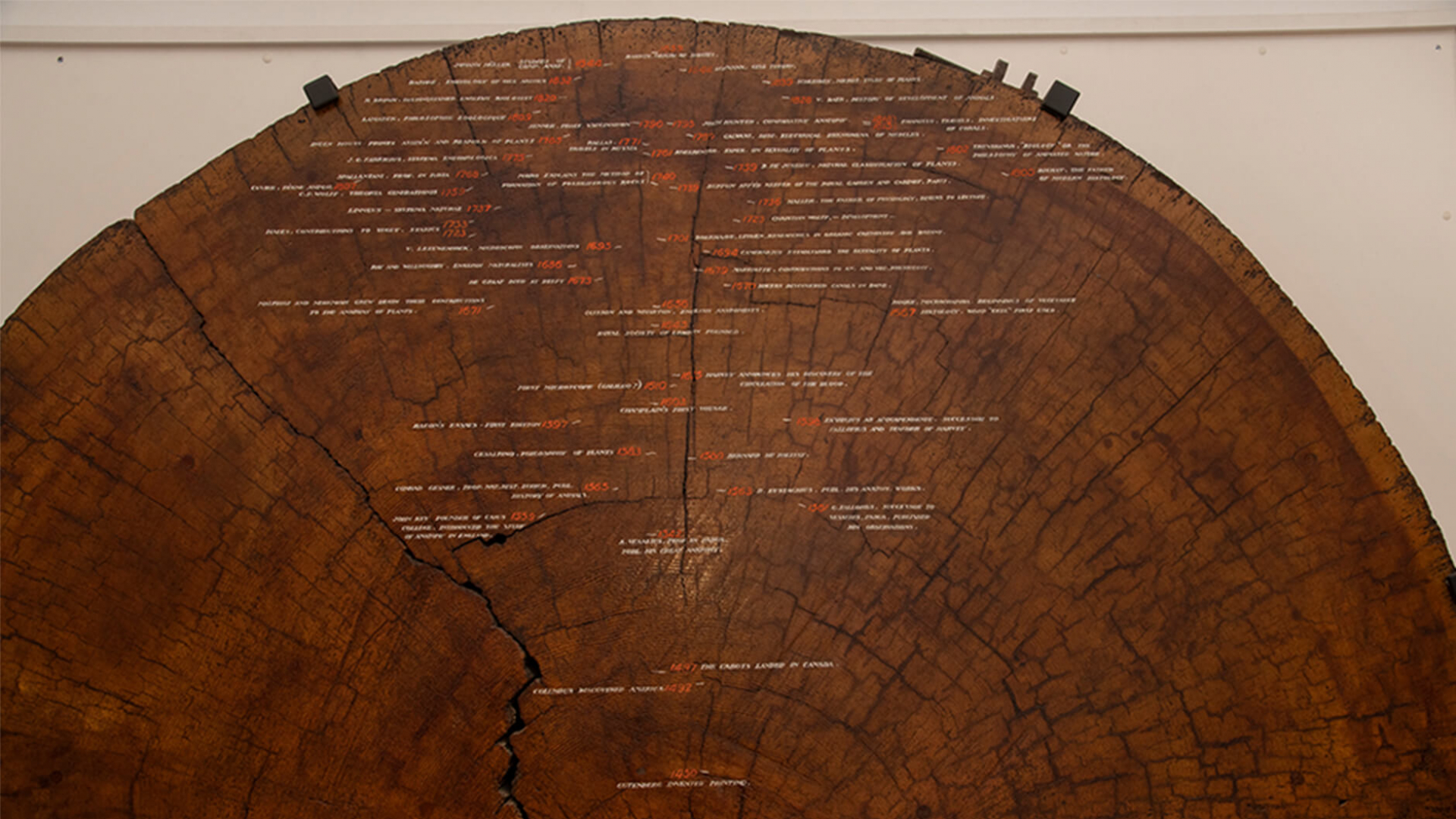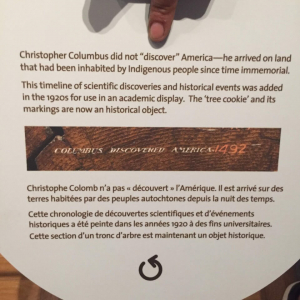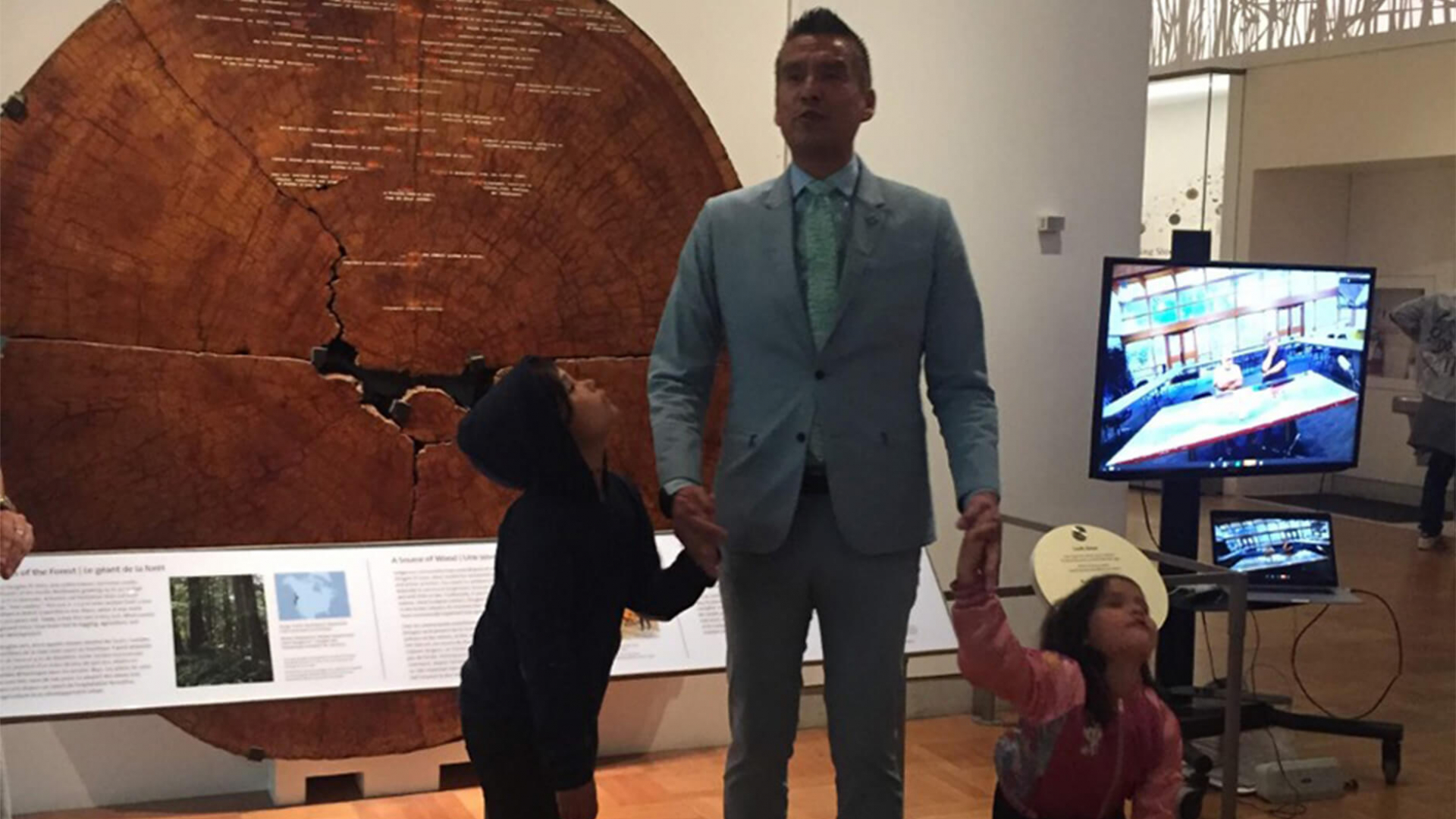A refreshed interpretation for the ROM’s Tree Cookie
The “Tree Cookie” is an endearing name that staff at the ROM and nature educators use for a 2.3-metre cross-section of a 500-year-old Douglas-fir in the Life in Crisis: Schad Gallery of Biodiversity. In the 1920s, this tree slice was turned into a historical object, featuring major Western events that took place during the time this tree was growing. This dominant narrative was further reflected on the Museum’s website, where noteworthy Western events were used to indicate the tree’s life span.
Fast forward to 2016 and the age of social media, where the ROM Learning Department became aware of a unique conversation prompted by Twitter comments. Stan Wesley, a Cree educator tweeted to invite the ROM to address an inaccurate Christopher Columbus Discovers America statement. The assertion is part of the timeline painted in the 1920s on the cross-section of the Douglas-fir, and appears in the center of the slice of the old-growth tree.
Wesley’s comments sparked a larger discussion at the ROM. We consulted the ROM Indigenous Advisory Circle (IAC) and determined that while we cannot change the intellectual property of the original interpretation, we have a responsibility to accurately interpret this outdated statement that reflects the beliefs at the time.
The timeline on the Tree Cookie that refers to Christopher Columbus discovering America is one that continues to draw public criticism even today. At the ROM, we wanted to welcome Wesley’s invitation to speak truth in public places like our Museum, and it propelled us to refresh the interpretation, without changing the original object.
New label that corrects the false Christopher Columbus discovery narrative. Photograph by Rachel Irwin.
In a refreshed perspective, we considered the cultural significance of this old-growth tree, an interpretation that is informed firsthand by Tseshaht members Darryl Ross Sr., Willard Gallic, and Gordon Dick. Hishook-ish Tsawalk is a Nuu-chah-nulth phrase, meaning “Everything is one/connected.” Since time immemorial, fir trees continue to be used mostly as a heat source due to little ash and smoke. They are also used for carving, housing, and ceremonies, and the pitch from the tree helps construct and repair canoes.
Ross, Gallic, and Dick helped the ROM engage in a discussion around a traditionally balanced ecosystem and the lived values of conservation that are still important. Tseshaht artist Gordon Dick shared that elders from the Nuu-chah-nulth area talked about how “cedar and fir trees hold up the mountains. Protect the fish in streams and rivers, and hold life in their branches.”
As we look at the Tree Cookie and the highlight of Western events marked on its trunk, a new interpretation allows us to move away from a purely Euro-centric view and focus on the life cycle of the Douglas fir and the original Nuu-chah-nulth ecosystem that it is a part of.
In 2019, we hosted a formal reveal of the revised interpretation and invited Wesley and his family to bear witness to the fruits of his grassroots effort to speak truth within our public institutions. As we approach the one-year anniversary of that event, we want to emphasize our efforts in changing history at the Museum in a way that is similar to the work our southern neighbours are doing in changing Columbus Day to Indigenous Day at events throughout the US this time of year. We hope our celebration becomes an annual tradition, as this act of reconciliation will live on with authentic Nuu-chah-nulth voices included in a real-time interpretation of living Indigenous cultures.
The ROM’s commitment to authentic engagement with Indigenous communities is propelled by the IAC’s guidance of the ROM Learning department to enact reconciliation through participation. The Tree Cookie refresh is a prime example of grassroots collaboration guiding institutional change.
Interview with Nuu-chah-nulth nation members from Tseshaht First Nation on the cultural significance of this tree.
This video is made possible in collaboration with Fleming College’s Environmental Visual Communication program. Video by Claire Foran.




